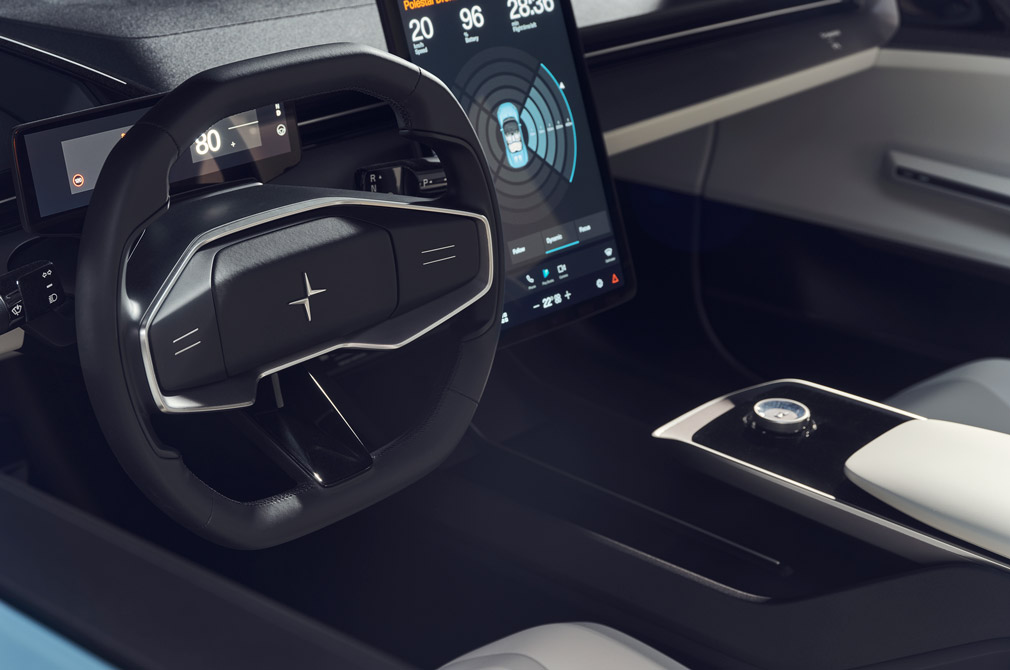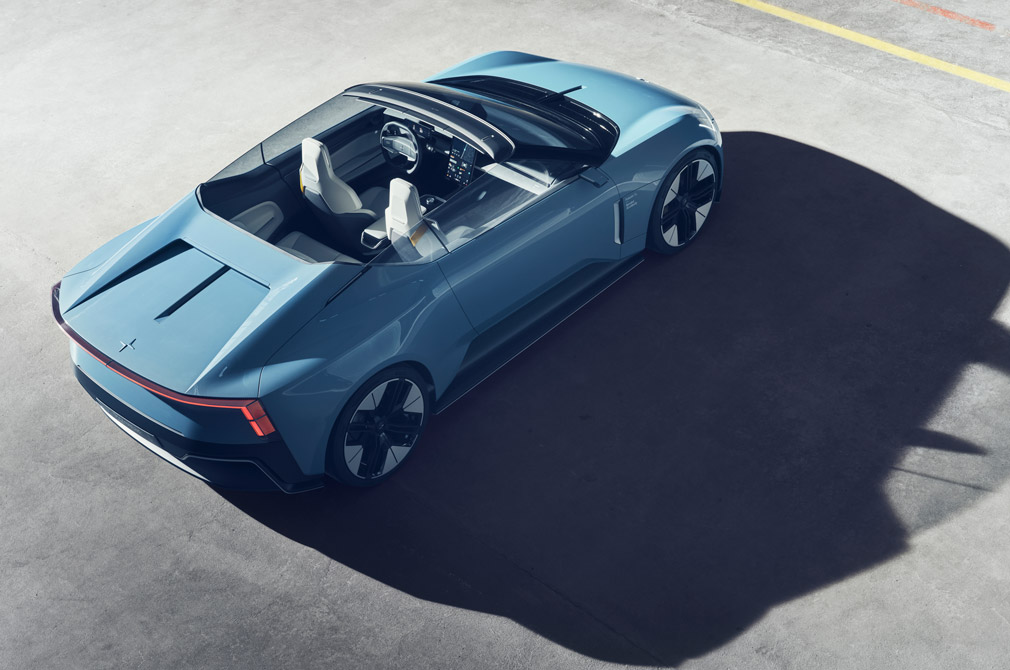
Polestar O2 Concept.
Polestar’s next model looks set to be a fun one.
The carmaker’s new electric convertible will be based on the O2, which has a folding hard-top. According to the brand’s CEO, Thomas Ingenlath, the O2 is Polestar’s hero car or halo model.
STYLING AND SUSTAINABILITY
The design of the Polestar O2 is related to the Precept concept. It features a low and wide body with minimal overhangs, a long wheelbase and 2+2 seating.
The aerodynamics are sculpted to maximise the vehicle’s range. It has elements such as integrated air ducts help improve laminar air flow over the wheels and flanks. Even the rear lights have been roped in to function as “air blades” to reduce turbulence behind the car.

Inside, the O2 will utilise a thermoplastic mono-material for the cabin. The term mono-material refers to a single base material used to manufacture various components used in the interior.
All the soft parts in the O2 cabin are made from recycled polyester: foam, adhesive, 3D knit fibres and non-woven lamination. For the chassis, the different grades of aluminium used are labelled, which helps them to be recycled more effectively, helping reduce the need for virgin aluminium.
Polestar says its overall goal is to simplify the recycling process while reducing waste and shaving weight.

HANDLING, DOCUMENTING AND SHARING
The O2 is “designed to be lively, light and full of confidence”, thanks to its bonded aluminium platform which was developed in-house.
The platform is engineered to have small roll angles and high roll damping, and will supposedly offer a direct and linear steering feel.
Interestingly, Polestar offers a way to document the fun drivers will have in the O2. The convertible will have an autonomous cinematic drone stowed behind the rear seats.
Developed by Hoco Flow, it can be deployed while the car is moving, and follow the vehicle at speeds of up to 90km/h.

That might be nice for O2 drivers in Singapore. However, there are more than a few areas where drones are restricted, while other places require operators to apply for permits to fly their devices.
Enabling the drone to take off while the car is on the move is a specialised aerofoil that rises behind the rear seats. This negates buffeting by creating a negative pressure or calm area.
Once the drone is up, the driver can choose between an atmospheric sequence – great for a coastline cruise – or a more action-filled sequence with a sportier expression.
After filming, the drone can autonomously return to the car. Video clips can be edited and shared directly from the 15-inch centre display when the car is parked.

Read our Polestar 2 Long Range Dual Motor review here














